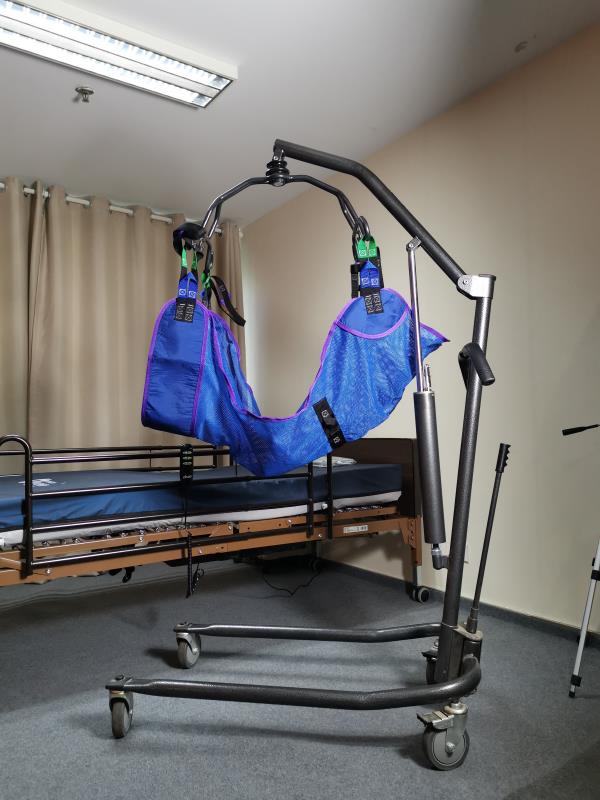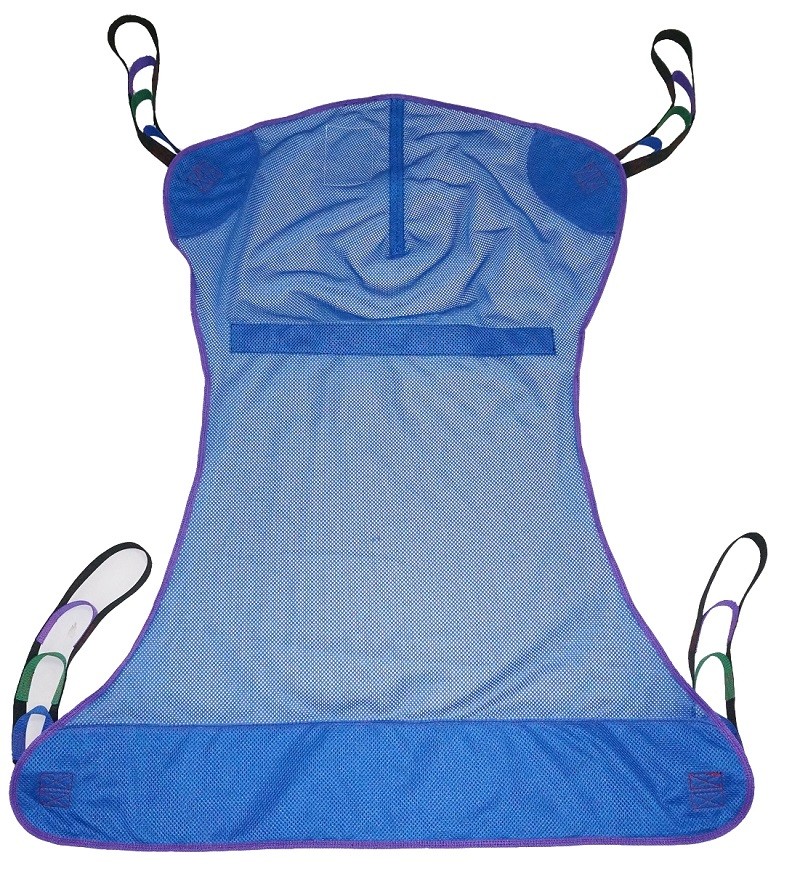If you face all those problem, just call us and we will give you a simple way to do it.
Contact Us For Free Sample !
Choosing the right Hoyer lift sling is crucial for ensuring safe and comfortable patient transfers. With various options available, it can be challenging to determine the most suitable sling for your specific needs.
This comprehensive guide will help you navigate the different types of Hoyer lift slings, empowering you to make informed decisions and provide optimal care.
Selecting the appropriate Hoyer sling is paramount for ensuring patient safety and comfort during transfers. Each sling type caters to specific needs and levels of support. Let's explore some of the most common options:
● Full-body slings: These slings offer comprehensive support for the entire body, making them suitable for patients with limited mobility or those requiring maximum assistance during transfers. They are available in various sizes and materials to accommodate diverse patient needs. For instance, a full-body sling with head support would be appropriate for a patient who cannot support their head and neck independently.
● Divided leg slings: Designed to support the upper body while allowing for leg movement, these slings are particularly useful for toileting and hygiene tasks. The design facilitates easier positioning and access. For example, a divided leg sling can aid in transfers to and from a commode or toilet.
● Toileting slings: These slings feature an open seat area, enabling patients to use the toilet without removing the sling. This promotes convenience and dignity while maintaining safety during transfers. A U-shaped sling, for example, provides support while allowing for proper positioning on the toilet.
● Specialized slings: A range of specialized slings caters to specific needs, such as amputee slings, bathing slings, and stand-assist slings. These slings address unique requirements and can significantly improve the quality of life for individuals with specific conditions. An amputee sling, for instance, is designed to provide support and stability for individuals with limb loss.

The fabric of a Hoyer sling plays a crucial role in patient comfort and the sling's overall effectiveness. Consider these factors when choosing the right material:
● Mesh Slings: These are the go-to choice for patients who tend to get warm or sweat easily. The breathable material allows for excellent air circulation, keeping the patient cool and comfortable. This also helps reduce the chance of skin irritation. Mesh slings dry quickly, making them perfect for use in showers or baths. Pro tip: Look for slings with a padded head support for added comfort.
● Padded Slings: If your patient needs extra support or has sensitive skin, padded slings are the way to go. The added cushioning helps protect bony areas and prevents pressure sores. These slings are especially helpful for patients with limited mobility who may spend extended periods in the sling. For maximum comfort, consider slings with contoured padding that conforms to the body's shape.
● Disposable Slings: In healthcare settings where hygiene is critical, disposable slings are a must. These single-use slings minimize the risk of infection and are often used in hospitals. They're made from soft materials that are gentle on the skin. While they're convenient, keep in mind that disposable slings can be less environmentally friendly, so consider reusable options when appropriate.
● Beyond the Basics: Think about the sling's durability and how well it supports the patient. You want a sling made from tough material that can handle regular use and washing without falling apart. Reinforced stitching is a good sign of a quality sling. The fabric should also be strong enough to keep the patient in a safe and comfortable position during transfers.
Getting the right size Hoyer sling is just as important as choosing the right type. A sling that's too big or too small can be uncomfortable and even dangerous. Here's how to ensure a proper fit:
● Measure Up: Before you even look at slings, take your patient's measurements. You'll need their weight and height, as well as the width of their hips and thighs. This will help you narrow down your options and choose a sling that fits snugly but isn't too restrictive.
● Weight Limits Are No Joke: Every Hoyer sling has a maximum weight limit. Never exceed this limit! It's there to protect your patient and prevent accidents. Always double-check the weight limit against your patient's weight to ensure it's a safe match.
● Consider Specific Needs: Think about your patient's individual needs. If they have limited mobility or need extra support, you might want to consider a sling with a higher weight capacity or one with additional features like padded leg supports.
● Don't Forget to Adjust: Once you've got the sling, make sure it's adjusted correctly. The straps should be snug but not too tight, and the patient should be positioned comfortably in the sling. A poorly adjusted sling can lead to discomfort, pressure sores, or even falls.

Choosing the right Hoyer sling can seem overwhelming with so many factors to consider. But don't worry, we've got you covered! Here are some expert tips to guide you:
● Assess Your Patient's Needs: Start by carefully evaluating your patient's individual needs. Consider their mobility level, any specific conditions they have, and their overall comfort preferences. This will help you narrow down the sling types and features that are most suitable. For example, a patient with limited head and neck control will require a sling with head support.
● Prioritize Safety and Comfort: Always prioritize safety when selecting a sling. Ensure the sling has an appropriate weight capacity and provides adequate support. Consider features like padded straps and contoured shapes for enhanced comfort.
● Consult with Healthcare Professionals: Don't hesitate to seek advice from healthcare professionals such as occupational therapists or physical therapists. They can provide valuable insights and recommendations based on your patient's specific needs.
● Trial and Error: Sometimes, the best way to find the right sling is through trial and error. Start with a sling that seems most appropriate and observe how your patient responds. Be prepared to adjust or try different slings until you find the perfect fit.
● Regularly Evaluate and Replace: It's important to regularly evaluate the sling's condition and replace it as needed. Look for signs of wear and tear, such as frayed straps or damaged fabric. Replacing worn-out slings ensures continued safety and comfort for your patient.
Choosing the right Hoyer lift sling is a crucial step in ensuring safe and comfortable patient transfers. By understanding the various sling types, fabric considerations, sizing options, and expert recommendations, you can make informed decisions that prioritize your patient's well-being.
Remember, a properly fitted and appropriate sling can significantly enhance your patient's quality of life while minimizing the risk of discomfort or injury. Take the time to assess their individual needs, consult with healthcare professionals, and explore different options to find the perfect sling.
For a wide selection of high-quality patient lift sling and expert advice, visit Chuangguo website. We offer a comprehensive range of slings designed to meet diverse needs and ensure optimal patient care.
Copyright © 2025 Gongguan Chuangguo Daily Products Co.,Ltd. | All Rights Reserved
Hello, please leave your name and email here before chat online so that we won't miss your message and contact you smoothly.